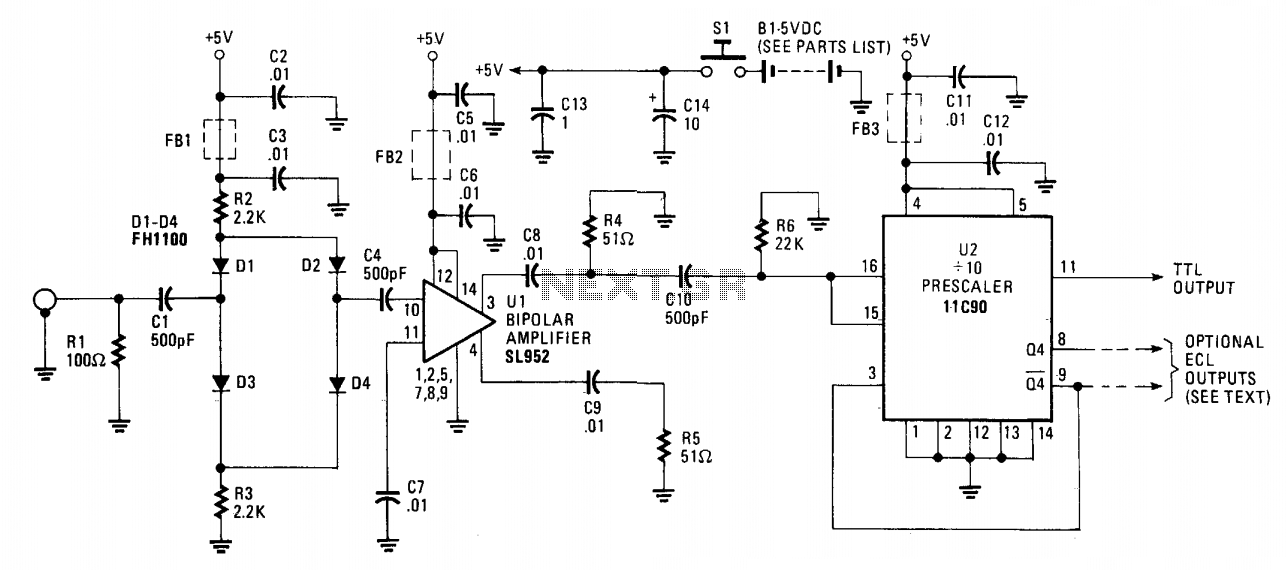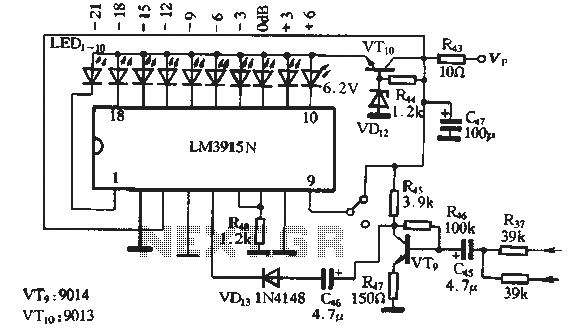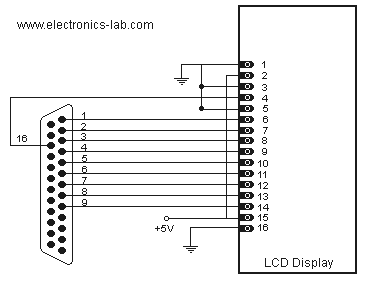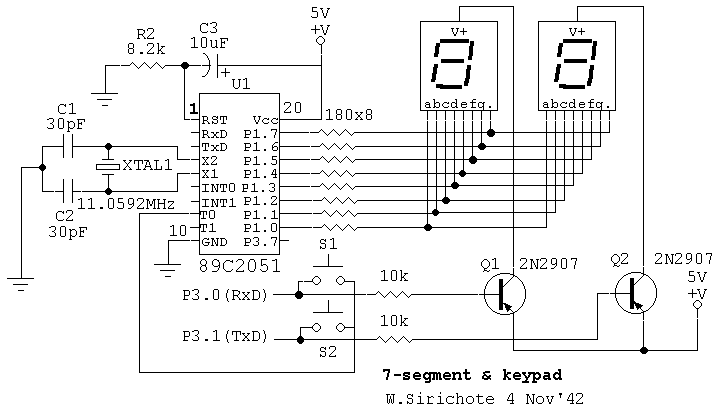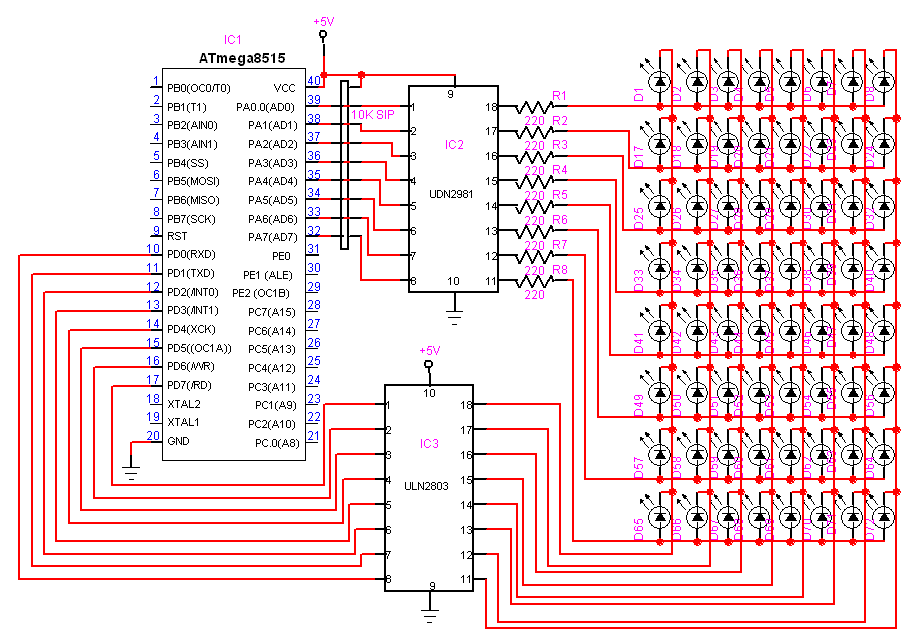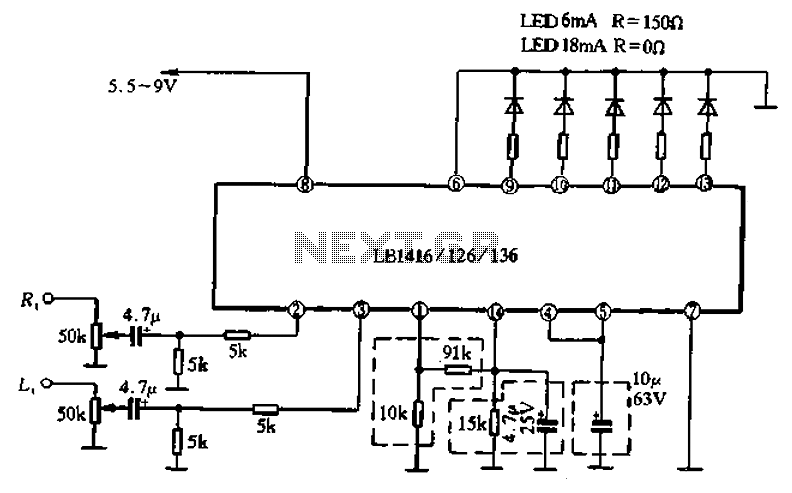
Logic Probe with Seven Segment Display

A logic probe is a circuit that indicates the logic state of a node in any TTL logic circuit. It operates when supplied with the same power level.
A logic probe is an essential diagnostic tool used in digital electronics to determine the logic level (high or low) at specific points in a TTL (Transistor-Transistor Logic) circuit. The probe provides a visual indication, typically through an LED, of whether a node is at a high (logic 1) or low (logic 0) state.
The operation of a logic probe requires a power supply that matches the voltage levels used in the TTL circuit, commonly +5V. The probe features a test lead that connects to the circuit node under investigation. When the probe is connected, it draws minimal current, ensuring that it does not significantly affect the circuit's operation.
Internally, the logic probe includes a voltage divider network and a comparator circuit. The voltage divider scales down the voltage at the probe's tip to a level suitable for the comparator. The comparator then compares this voltage to a reference level, typically set at approximately 2.5V for TTL circuits. If the voltage at the probe tip exceeds the reference level, the output of the comparator goes high, activating the LED to indicate a high logic state. Conversely, if the voltage is below the reference level, the LED remains off, indicating a low logic state.
The design may also incorporate additional features, such as a buzzer for audible feedback, or a switch to toggle between different logic levels (e.g., TTL and CMOS). This versatility enhances the probe's utility in various digital troubleshooting scenarios, making it a valuable instrument for engineers and technicians working with digital circuits.
The construction of the logic probe must ensure that it is compact and portable, with robust insulation on the probe tip to prevent accidental short circuits. The user interface should be intuitive, allowing quick interpretation of the logic levels without extensive training. Overall, the logic probe serves as a fundamental tool in the arsenal of electronic diagnostics, facilitating efficient troubleshooting and verification of digital systems.Logic probe is circuit that indicates the logic state of the node of any TTL logic circuit. It will work if we must supply the probe with the same power of.. 🔗 External reference
A logic probe is an essential diagnostic tool used in digital electronics to determine the logic level (high or low) at specific points in a TTL (Transistor-Transistor Logic) circuit. The probe provides a visual indication, typically through an LED, of whether a node is at a high (logic 1) or low (logic 0) state.
The operation of a logic probe requires a power supply that matches the voltage levels used in the TTL circuit, commonly +5V. The probe features a test lead that connects to the circuit node under investigation. When the probe is connected, it draws minimal current, ensuring that it does not significantly affect the circuit's operation.
Internally, the logic probe includes a voltage divider network and a comparator circuit. The voltage divider scales down the voltage at the probe's tip to a level suitable for the comparator. The comparator then compares this voltage to a reference level, typically set at approximately 2.5V for TTL circuits. If the voltage at the probe tip exceeds the reference level, the output of the comparator goes high, activating the LED to indicate a high logic state. Conversely, if the voltage is below the reference level, the LED remains off, indicating a low logic state.
The design may also incorporate additional features, such as a buzzer for audible feedback, or a switch to toggle between different logic levels (e.g., TTL and CMOS). This versatility enhances the probe's utility in various digital troubleshooting scenarios, making it a valuable instrument for engineers and technicians working with digital circuits.
The construction of the logic probe must ensure that it is compact and portable, with robust insulation on the probe tip to prevent accidental short circuits. The user interface should be intuitive, allowing quick interpretation of the logic levels without extensive training. Overall, the logic probe serves as a fundamental tool in the arsenal of electronic diagnostics, facilitating efficient troubleshooting and verification of digital systems.Logic probe is circuit that indicates the logic state of the node of any TTL logic circuit. It will work if we must supply the probe with the same power of.. 🔗 External reference
